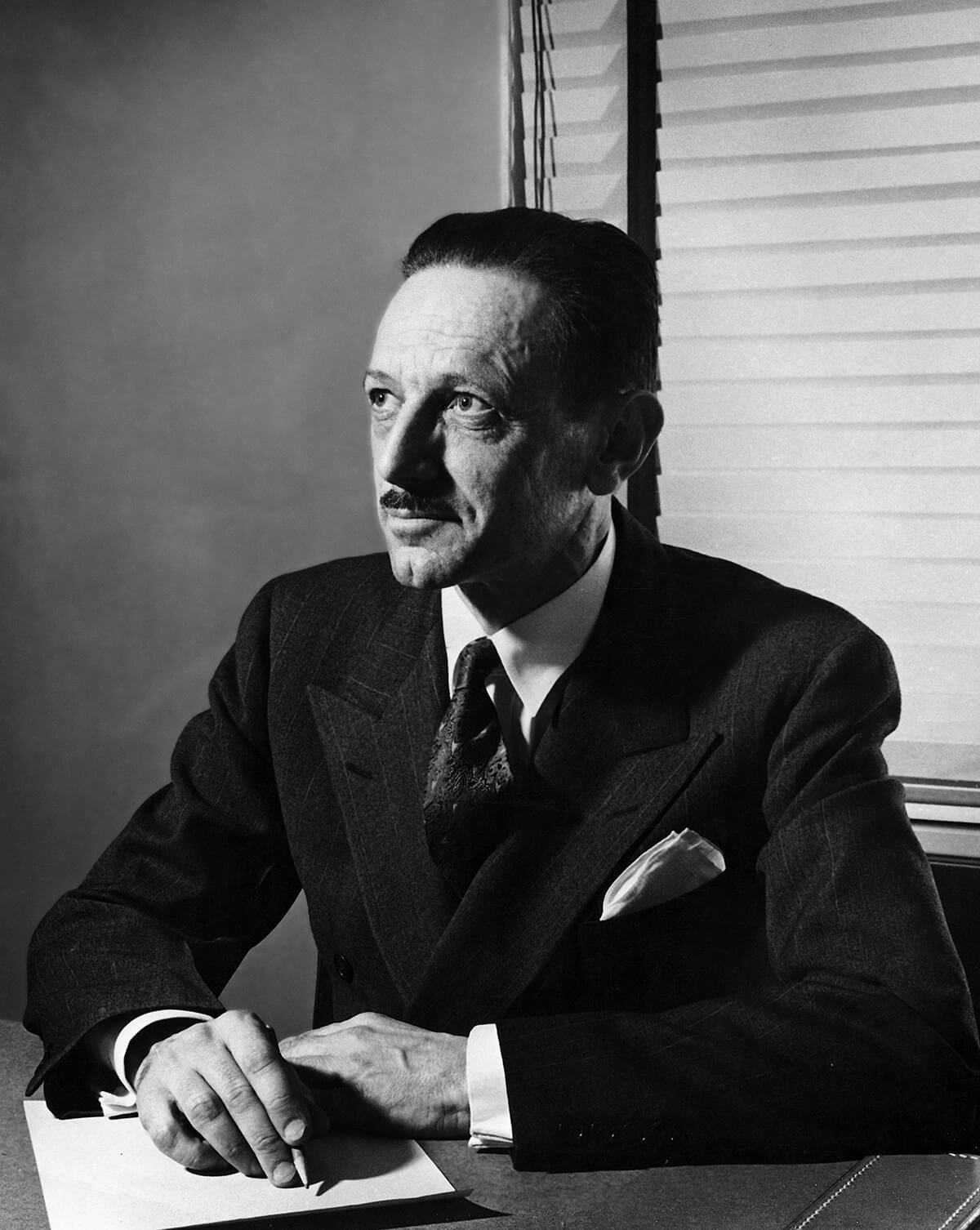Art Deco Secretary Cabinet Desk in Book Matched Walnut by Gilbert Rohde













Art Deco Secretary Cabinet Desk in Book Matched Walnut by Gilbert Rohde
This rare and captivating Art Deco Drop Front Secreter Desk in Book-matched Hand-Rubbed Walnut is by the esteemed furniture designer Gilbert Rohde and originates from the United States, Circa 1942. Features a geometric construction in book-matched and hand-rubbed walnut with four minimal concave sculptural pulls. The linear grain of the walnut is beautifully exposed, exemplifying the high quality materials and fresh modern designs of Gilbert Rohde and the Art Deco movement as a whole. Highly functional, the top section of the front lowers to serve as a working surface and revealing storage space. There's an open shelf beneath this top surface, as well as two drawers to the right and a cabinet on the left side of the piece providing ample storage opportunity and adding to the function and aesthetics of the piece. This Desk will style beautifully in a wide array of spaces and settings, from Art Deco to Mid-Century Modernist and Contemporary Interiors. In Mint Restored Condition.
American, circa 1942
Dimensions:
Height: 42 in (106.68 cm) x Width: 36 in (91.44 cm) x Depth: 18 in (45.72 cm)
Creator: Gilbert Rohde (Maker)
Style: Art Deco (Of the Period)
Materials and Techniques: Walnut
Place of Origin: United States
Period: 1940-1949
Date of Manufacture: circa 1942
Condition: Excellent. Refinished.
Reference Number: LU793438728002
GILBERT ROHDE
Gilbert Rohde is a seminal figure in mid-century modern design, particularly noted for his influential work with Herman Miller. Rohde's designs, characterized by their earthy tones, gentle forms, and blend of Art Deco and Bauhaus influences, have left an indelible mark on modern furniture and interior design.
Born in New York, Rohde developed a passion for design in his father's workshop. After graduating from high school in 1913 and earning a degree from the Grand Central School of Art, a transformative trip to Europe in 1927 inspired his future projects. His career began to gain traction in 1929 when he showcased his work at the Newark exhibition "Modern American Design in Metal." His innovative use of materials and commitment to integrating art into everyday life quickly caught the public's eye.
Rohde's breakthrough came with his collaboration with Herman Miller, where he served as a design advisor. His designs were influenced by surrealism and international styles, incorporating natural patterns into furniture that was both cozy and detail-oriented. This approach set the standard for modernist style, making his work timeless yet bold.
Throughout his career, Rohde was driven by the desire to create furniture that was not only functional but also embodied America's national architectural and interior style. He envisioned mid-century modern design as the quintessential look for American homes—classic, cozy, and functional. His work often featured biomorphic forms, achieved by softening sharp edges and creating organic shapes in tables, chairs, and nightstands.
Rohde's influence extended beyond residential design to office spaces and public buildings, where his modular furniture lines became synonymous with flexibility and functionality. His designs were showcased in numerous exhibitions, including the "Design for Machine" exhibit in Philadelphia and the "Art and Industry" exhibit at Rockefeller Center. These exhibitions solidified his reputation as a leading figure in modernist design.
In the 1940s, Rohde's work evolved to include graphic design and packaging, most notably for brands like Crest toothpaste and Tide. He also developed Weldtex, a decorative plywood that became popular in the 1950s. Despite his passing in 1944, Rohde's legacy continued through his innovative designs and the lasting impact he had on Herman Miller, which later included the iconic work of George Nelson.
Rohde's designs experienced a resurgence in the 1990s, as interior designers and collectors rediscovered the timeless appeal of mid-century modernism. His work, characterized by its luscious colors, monumental scale, and bespoke quality, remains a staple in modern interior design. Museums worldwide, from the Metropolitan Museum of Art to the Victoria and Albert Museum, feature Rohde's pieces, cementing his place in design history.
Rohde's career was marked by a relentless pursuit of innovation and a deep understanding of the evolving needs of American households. His designs bridged the gap between Art Deco and mid-century modern styles, creating pieces that were both functional and aesthetically pleasing. Today, his work continues to inspire new generations of designers, ensuring that the legacy of Gilbert Rohde lives on in the world of interior design.



